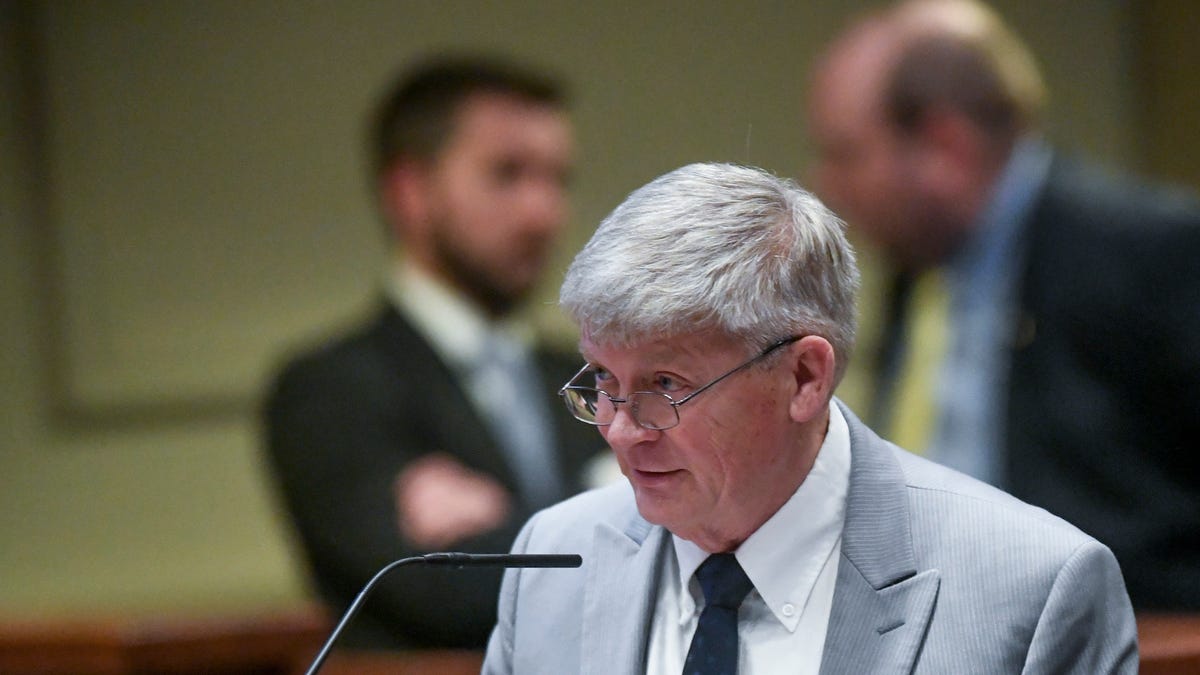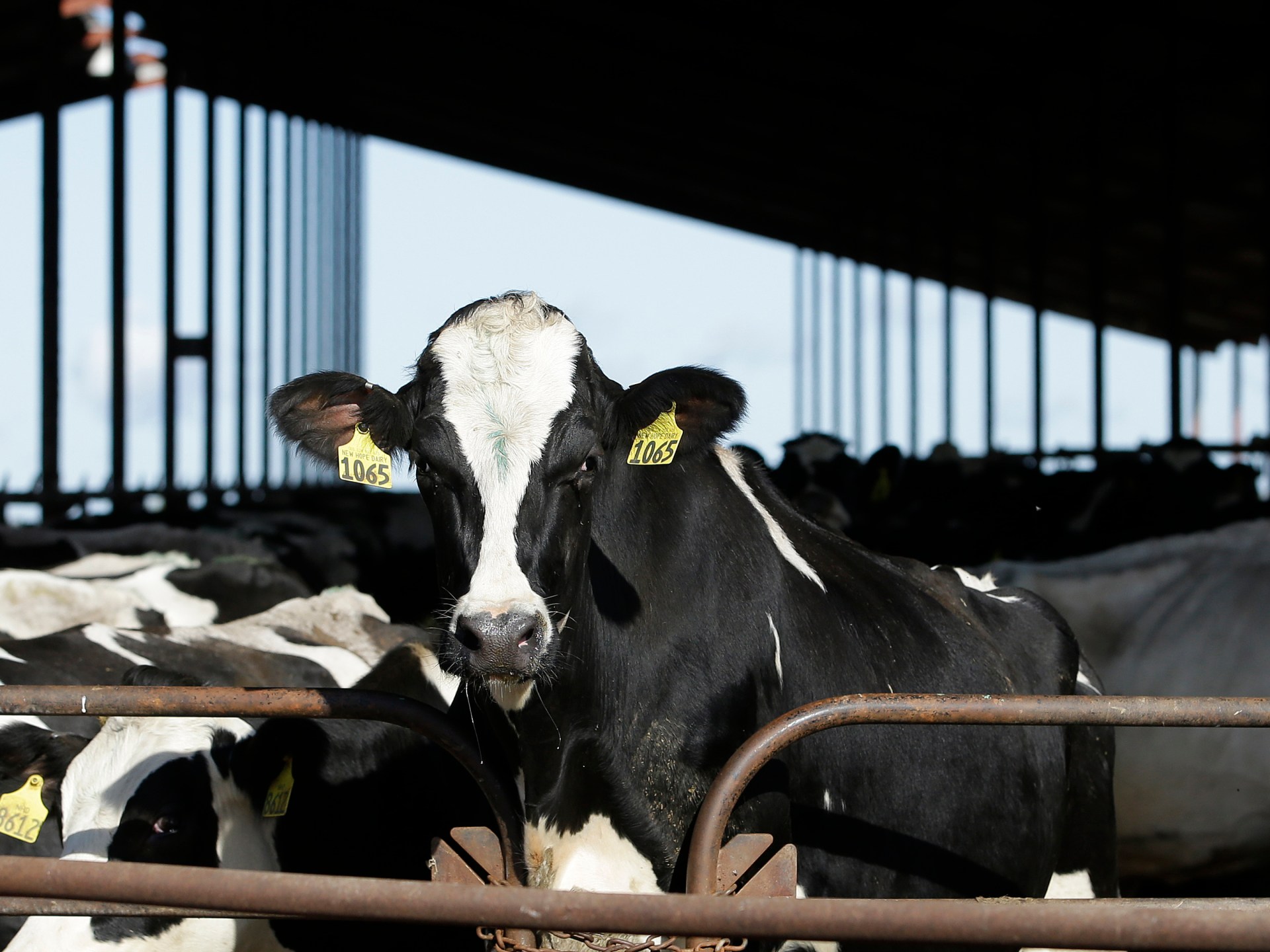South Dakota
Sen. Jean Hunhoff surveys long-term care solutions

This interview originally aired on In the Moment on SDPB Radio.
The South Dakota Legislature set up a summer committee to study the long-term care crisis and its possible solutions. The committee had its first meeting on Tuesday, May 23.
Sen. Jean Hunhoff is chair of the committee. She’s extensively worked on this issue since 2006.
She joins In the Moment to discuss the outcomes of the state’s previous attempts to address seniors’ needs and what’s new in the story as legislators tackle the topic afresh.

South Dakota
South Dakota’s recreational marijuana campaign readies another ballot run

Matthew Schweich hopes that when it comes to recreational marijuana legalization in South Dakota, the third time is the charm.
“Everything’s on schedule,” said the campaign director of South Dakotans for Better Marijuana Laws, whose group handed in 29,030 signatures for its recreational pot initiated measure to the Secretary of State’s office in Pierre on Tuesday, the final day that signatures could be submitted for 2024.
It’s been a mad dash to the finish line for the pro-legalization group, which also had a hand in putting the issue on the ballot in 2020 and 2022. The effort got a late start due to concerns about funding and didn’t really hit its stride with paid circulators until February.
“I think it would have been a mistake to launch a signature drive without knowing we had the resources to do it properly,” said Schweich, adding that funding for the petition drive came from the Grow South Dakota Ballot Committee (with former state legislator Deb Peters as treasurer) and Puffy’s Dispensary, a West River-based medical cannabis operation.
The number of verified signatures needed to qualify initiated measures for the ballot is 17,508, which represents 5% of the total vote for governor in the last gubernatorial election. Constitutional amendments require 35,017, which is 10%.
After receiving a petition, state law requires the Secretary of State to “examine and catalog” the signatures and make them available to the public upon request for a reasonable fee. Within five days of that examination, the Secretary of State is required to generate a random sample to determine the validity of the signatures, with the validation sheets also available for public inspection.
If the recreational marijuana measure makes the ballot, the campaign will have to grapple with possible voter fatigue on an issue that will be put before South Dakota voters for a third consecutive statewide election.
In 2020, pro-legalization Amendment A passed with 54% of the vote, clearing the way for recreational marijuana to be implemented in the state. Medicinal pot was also approved by voters that year in an initiated measure.
Gov. Kristi Noem’s administration challenged the recreational marijuana amendment, saying it violated the state’s requirement that constitutional amendments deal with just one subject. That argument prevailed in a 4-1 decision at the South Dakota Supreme Court.
Supporters tried to pass recreational cannabis again in 2022, and South Dakotans rejected that effort, sending Initiated Measure 27 to defeat with 53% of voters against it.
Schweich acknowledges making a political miscalculation by going back to the issue in 2022 rather than “taking a breather” and waiting for 2024, a presidential election year with higher voter turnout than midterms.
“My theory was that the anger over the amendment being overturned would cause a whole bunch of voters who might not otherwise show up for the midterms to go out and vote,” said Schweich, who also runs Eagle Campaigns, a political campaign service in Sioux Falls. “It was an ambitious theory, and unfortunately things didn’t play out that way. It turns out that changing an electorate is very difficult.”
South Dakotans for Better Marijuana Laws will focus on get-out-the-vote efforts rather than trying to win “the hearts and minds” of voters on an issue that they are well-versed on following the 2020 and 2022 campaigns.
Recreational marijuana is currently legal in 24 states, with supporters pointing to economic advantages to the state economy from tax revenue. States collected nearly $3 billion in marijuana revenues in 2022, according to the Tax Foundation.
Opponents cite potential social costs and health risks such as a higher risk of cardiovascular problems from marijuana use, as outlined in a recent study in the Journal of the American Heart Association.
If the measure makes the ballot and fails, said Schweich, there will not be a fourth consecutive time on the ballot, at least from his group.
“If we fail in 2024, which I don’t think will happen, I will respect that and will not be part of putting this issue on the ballot in 2026,” said Schweich.
This story was produced by South Dakota News Watch, an independent, nonprofit news organization. Read more in-depth stories at sdnewswatch.org and sign up for an email every few days to get stories as soon as they’re published. Contact Stu Whitney at at stu.whitney@sdnewswatch.org.
South Dakota
New genus of tiny, hornless deer that roamed South Dakota 32 million years ago discovered

A new genus of tiny, hornless deer that lived in South Dakota during the Oligocene Epoch approximately 32 million years ago has been discovered by a team of researchers from Badlands National Park, the American Museum of Natural History and California State Polytechnic University, officials said.
The new deer, called Santuccimeryx, meaning “Santucci’s ruminant”, was named after Vincent L. Santucci, the Senior Paleontologist and Paleontology Program Coordinator in the Geologic Resources Division of the National Park Service “to honor his history with and advocacy for the paleontology program at Badlands National Park,” according to a statement from the National Park Service announcing the discovery.
A high definition photo of the Santuccimeryx skull discovered at Badlands National Park in 2016.
National Park Service
The research was published this week in the “Proceedings of the South Dakota Academy of Science.”
“Santuccimeryx belongs to the extinct family Leptomerycidae, and its skull shares features of both the Oligocene genus Leptomeryx and the Miocene genus Pseudoparablastomeryx, two animals that are nearly 10 million years apart in time,” NPS said in their statement. “The family Leptomerycidae were about the size of house cats and lived in North America from the late-middle Eocene (about 41 million years ago) to the end of the middle Miocene (about 11 million years ago). They are considered close relatives to the living chevrotains, or mouse deer, from the tropical forests of central and western Africa and southeast Asia.”
The new genus of deer has teeth very similar to Leptomeryx and a skull resembling that of the Pseudoparablastomeryx, officials said.
“Since it does not fit into either existing genus, [officials] concluded the deer must be placed into a new genus of its own,” NPS said.

A paleoartistic reconstruction of the newly named genus Santuccimeryx elissae, shown standing in front of hackberry bushes. Its small size (3-5 lbs), relatively large orbits, and shortened skull differentiate Santuccimeryx from the tiny Oligocene deer Leptomeryx. Illustration by Benji Paysnoe.
Illustration by Benji Paysnoe.
“I am both personally and professionally grateful to be associated with this important new fossil discovery from Badlands National Park, where I began my career as a paleontologist with the National Park Service in 1985,” Santucci said.
The research was prompted when the first — and still only known skull of the deer — was discovered at Badlands in 2016.
“It’s a really neat example with this paper to be able to highlight citizen science, because this is the only skull of this animal ever found,” Mattison Shreero, who headed up the research, said. “And if somebody had walked away with it, or if they just hadn’t reported it and it had eroded away, we would have never known about it.”
Visitors at Badlands who spot what they think might be a fossil or artifact are asked to leave it in place and submit a Visitor Site Report at the Visitor Center, with a park ranger, or by email information about their find to Badlands_fossil_finds@nps.gov.
South Dakota
South Dakota joins pushback against new EPA coal rules • South Dakota Searchlight

South Dakota has joined a group of states, led by North Dakota and West Virginia, in asking a federal court to review new pollution standards impacting the coal industry.
Attorneys general from 23 states signed the petition asking for a review of the regulations that took effect Tuesday. The final proposed rules became public on April 25.
“This rule intentionally sets impossible standards to destroy the coal industry,” North Dakota Attorney General Drew Wrigley said in a news release.
Wrigley said the Biden administration has ignored limits on its authority set by Congress.
“Federal agencies cannot decide on a whim to destroy entire industries,” Wrigley said.
North Dakota prepares to fight EPA rule one official calls a ‘death penalty for coal’
The petition was filed Wednesday in the U.S. District Court of Appeals in Washington, D.C., asking the court to review the Environmental Protection Agency rule.
Other states that signed the petition were Alaska, Arkansas, Georgia, Idaho, Indiana, Iowa, Kansas, Kentucky, Louisiana, Mississippi, Missouri, Montana, Nebraska, Oklahoma, South Carolina, South Dakota, Tennessee, Texas, Utah, Virginia and Wyoming.
In its announcement of the rules on April 25, EPA Administrator Michael Regan said “EPA is cutting pollution while ensuring that power companies can make smart investments and continue to deliver reliable electricity for all Americans.”
In particular, North Dakota officials have taken issue with new, stricter mercury emissions standards.
Dave Glatt, director of the North Dakota Department of Environmental Quality, said the mercury standard provides no measurable health benefits and are a “death sentence for coal.”
Jason Bohrer, president and CEO of the Lignite Energy Council, released a statement after the final rule was announced in April.
“Electricity demand is surging, and the EPA’s agenda will severely impact our ability to rely on electricity 24/7,” Bohrer said. “These regulations mandate either fuel switching or the implementation of unproven technology, jeopardizing the stability of the national power supply, and putting over 12,000 jobs in the lignite industry at risk.”
The Lignite Energy Council says the North Dakota coal industry contributes $5.75 billion to the state economy and more than $100 million in state and local taxes.
In addition to mercury reductions, the new rules also lower the levels of pollutants that coal-fired power plants can discharge through wastewater, sets standards for handling coal ash and sets limits on carbon emissions. North Dakota Gov. Doug Burgum and other state officials have repeatedly complained about onerous regulations from the Biden administration, with Burgum even making a plea to a legislative committee to provide adequate funding for the state’s legal battles with the federal government.
GET THE MORNING HEADLINES DELIVERED TO YOUR INBOX
-

 Politics1 week ago
Politics1 week agoThe White House has a new curator. Donna Hayashi Smith is the first Asian American to hold the post
-

 World1 week ago
World1 week agoTurkish police arrest hundreds at Istanbul May Day protests
-

 News1 week ago
News1 week agoPolice enter UCLA anti-war encampment; Arizona repeals Civil War-era abortion ban
-

 Politics1 week ago
Politics1 week agoAdams, NYPD cite 'global' effort to 'radicalize young people' after 300 arrested at Columbia, CUNY
-

 News1 week ago
News1 week agoVideo: Police Arrest Columbia Protesters Occupying Hamilton Hall
-

 News1 week ago
News1 week agoSome Republicans expected to join Arizona Democrats to pass repeal of 1864 abortion ban
-

 Politics1 week ago
Politics1 week agoNewsom, state officials silent on anti-Israel protests at UCLA
-
)
) Movie Reviews1 week ago
Movie Reviews1 week agoThe Idea of You Movie Review: Anne Hathaway’s honest performance makes the film stand out in a not so formulaic rom-com

:quality(70)/cloudfront-us-east-1.images.arcpublishing.com/adn/ZC6DK5BR2NAV5CIHV5OD4MG3PQ.jpg)












